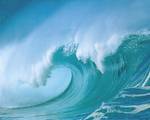
There are three main types of coastal barriers that are formed. These include spits, barrier beaches, and barrier islands. All of these barriers are formed by similar processes, such as wave induced, tidal range, sea level rise, and fluvial sources. The only real fifference between the three structures has to do with the form of each. Spits are barriers that are attached to either the mainland or from and island (flying spits). One very local exmaple of a spit, is Buctouche spit, which is a great example for looking at the evolution of spits over time. The general premice, is that sediment is eroded from the proximal end (the end connected to land), this can include beach material as well as material from the dune. This sediment is then transported by longshore drift and is deposited on the distal end. As well a lot of sediment foes off shore and eventually is reworked to form new spits further down shore of the original. (Ollerhead and Davidson Arnott, 1995). Barrier islands are only really different from spits due to the fact that they are not connected to shore. This allows there to be many inlets in between barrier islands, which allow ocean water to move in to the back barrier environment. Barrier beaches are slightly different then bouth spits and barrier island in that they are completely made up of beach material and do not contain dunes. Therefore they are less protective structurs due to the absence of dunes. Barriers in general are very protective structures that protect lagon, ponds, salmarhes, and mangroves from intense wave and tide action that would normally occur along the coast. This allows for prime spawning grounds for many fish in these estuarine conditions as well as allows for the devlopment of larvae. Barriers unfortunately have been negatively effected by human greed, as dredging, building of causeways, and jetties have all caused changes to the system. Dredging which commonly occurs in the estuary hurts these fragile habitats as well as the reulting filling in of sediment for more recreational land changes the ecosystems present. Causeways can impede tidal flow and thus cause there to be a negative impact on the coasal geomorphology of barriers as well as on the biology that lives there. Things such a jetties cause the deposition of sediment in areas that it would normally not occur and thus can cause a negative sediment budget situation that may cause the continued erosion and eventual elimination of spits and the like, thus causing back shore areas to become exposed to natures whim.





